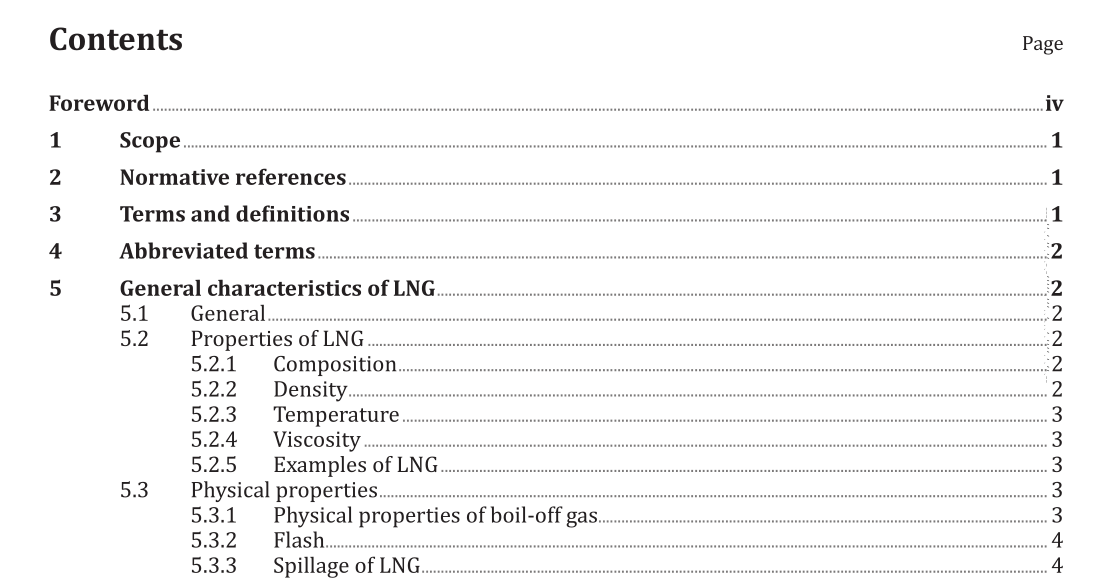ISO 16903:2015 pdf download.Petroleum and natural gas industries — Characteristics of LNG, influencing the design, and material selection
5.2 Properties of LNG
5.2.1 Composition LNG is a mixture of hydrocarbons composed predominantly of methane and which can contain minor quantities of ethane, propane, butane, nitrogen, or other components, normally found in natural gas. The physical and thermodynamic properties of methane and other components of natural gas can be found in reference books (see Annex A) and thermodynamic calculation codes. Although the major constituent of LNG is methane, it should not be assumed that LNG is pure methane for the purpose of estimating its behaviour. When analysing the composition of LNG, special care should be taken to obtain representative samples not causing false analysis results due to distillation effects. The most common method is to analyse a small stream of continuously evaporated product using a specific LNG sampling device that is designed to provide a representative gas sample of liquid without fractionation. Another method is to take a sample from the outlet of the main product vaporizers. This sample can then be analysed by normal gas chromatographic methods, such as those described in ISO 6568 or ISO 6974.
5.2.2 Density
The density of LNG depends on the composition and usually ranges from 420 kg/m 3 to 470 kg/m 3 , but in some cases can be as high as 520 kg/m 3 . Density is also a function of the liquid temperature with a gradient of about 1,4 kg/m 3 /K. Density can be measured directly but is generally calculated from composition determined by gas chromatographic analysis. The method as defined in ISO 6578 is recommended. NOTE This method is generally known as revised Klosek-McKinley method.
5.3.2 Flash
As any fluid, if pressurized LNG is lowered in pressure below its boiling pressure, for example by passing through a valve, then some of the liquid evaporates and the liquid temperature drops to its new boiling point at that pressure. This is known as flash. Since LNG is a multi-component mixture, the composition of the flash gas and the remaining liquid differ for similar reasons from those discussed in 5.3.1. As a guide, a 10 3 Pa flash of 1 m 3 liquid at its boiling point corresponding to a pressure ranging from 1 × 10 5 Pa to 2 × 10 5 Pa produces approximately 0,4 kg of gas. More accurate calculation of both the quantity and composition of the liquid and gas products of flashing multi-component fluids such as LNG are complex. Validated thermodynamic or plant simulation packages for use on computers incorporating an appropriate database should be used for such flash calculations.
ISO 16903:2015 pdf download
